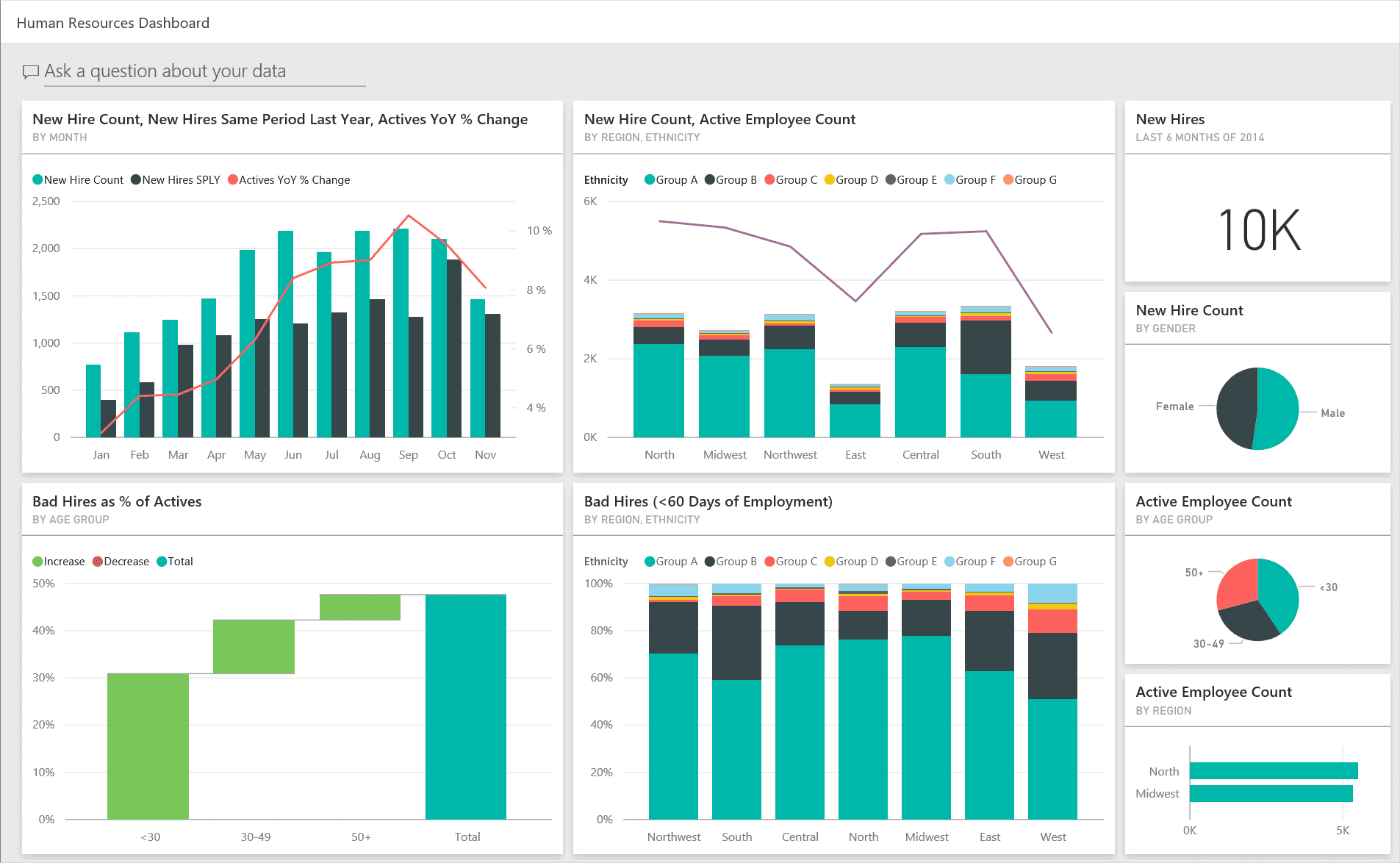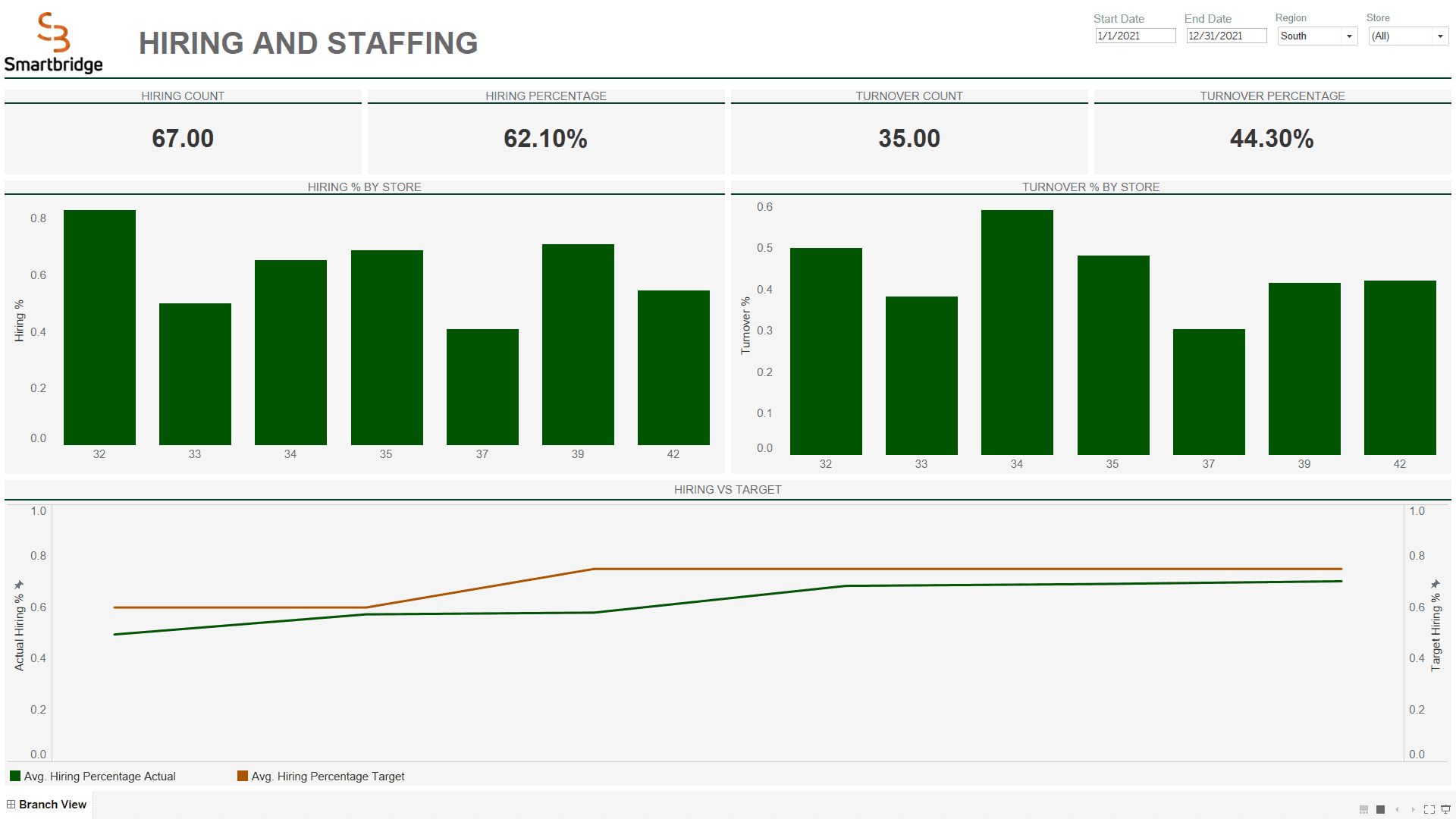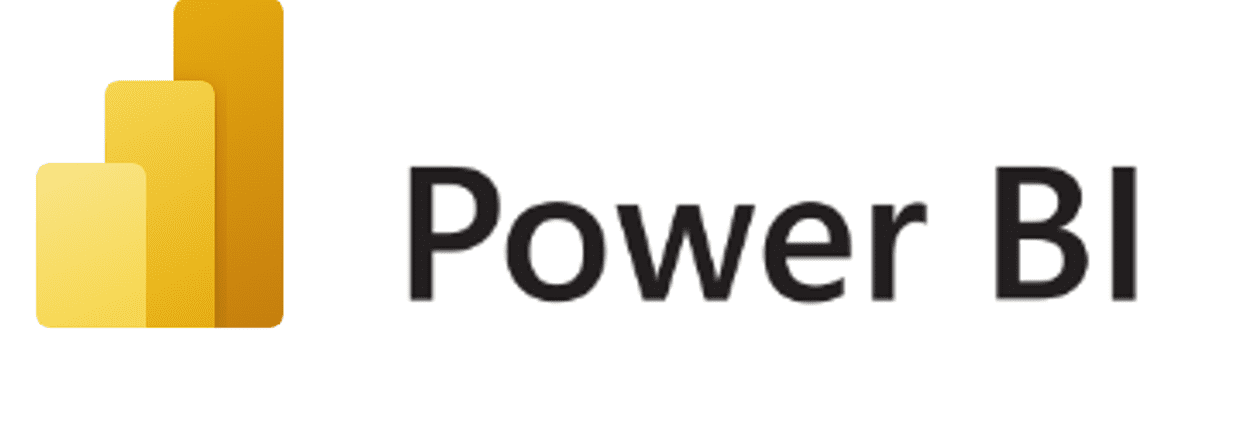Using Enterprise Business Intelligence to Improve Hiring and Retention
As analytics become more widely available throughout organizations, we’re seeing how they can assist not only leadership, but also back-office operations and processes such as hiring and retention.
Over the past couple years, so much about our lives and the way we go about them has changed, and these impacts can clearly be seen in the job market. Several industries have seen high rates of resignation and turnover and are forcing us to rethink how to attract and keep talented employees. It’s important that we focus on analytics as we adapt to solve these hiring and staffing issues. Today, I want to review a few ways in which enterprise business intelligence (BI) can adapt to the changing landscape to help businesses hire and retain talent

Image courtesy of Microsoft
Are we looking at all the right data?
At this point, it’s no secret that there are massive volumes of data we can tap into for rich insights. Data lakes, warehouses, and other cloud repositories enable organizations to have a centralized location to store and analyze disparate data sources. I bring this up because creating new and insightful KPIs for hiring and staffing may require looking at new data.
It’s important to have conversations with hiring and staffing SMEs to determine what new data could be useful for analysis. This could mean looking at 3rd party data and sources to supplement your existing data, including store location reviews, regional demographics data, or market research data.
It’s also very likely that the KPIs require data that already exists in your organization, but it hasn’t been made available for hiring or staffing analytics. For example, we’ve seen clients start to build out brand new retention models in their staffing dashboards based on data they already had access to, but hadn’t had the chance to build off of yet.
Are we identifying important trends?
While accessing and incorporating new data is part of the equation, a lot of the value is in how the new data correlates with existing metrics. This is where advanced analytics and data science can come into play.
For example with metrics like turnover, it’s important to understand what main drivers are causing people to leave. Is it related to employees being scheduled at inconvenient times, not having enough staff on site, long commute times to work, or combinations of all the above?
Advanced analytics provides a lot of insight into these issues, and it’s becoming easier to integrate into enterprise BI platforms. Azure ML or the Einstein Analytics integration with Tableau are great no-code and low-code tools to help teams improve their analytics and quickly integrate them into Microsoft Power BI apps, Tableau dashboards, and other BI reports.
Are we providing actionable analytics?
Lastly, I want to talk about the importance of analytics providing clear takeaways and action items for users. A lot of BI reporting tends to provide descriptive analytics (i.e. describing what’s happening), but reports and dashboards can add even more value if they tell users what to do with that information.

This form of prescriptive analytics can involve more advanced solutions like Artificial Intelligence (AI) or Machine Learning (ML) to provide feedback on how to improve performance. However, not all prescriptive analytics has to rely on advanced techniques.
A great example of this pertaining to hiring metrics that we’ve seen implemented at one of our clients is to focus on metrics that managers have control over. The number of job applications a specific restaurant location receives may not be completely up to the manager since other things could be happening in that market. However, the manager does have control over how quickly they respond to applications, and how quickly they can onboard new talent. Dashboards that focus on these application-to-hiring durations help provide an assessment of how successful the manager is at onboarding new talent, and if there needs to be improvement.
Closing
The suggestions I’ve covered here are by no means a comprehensive list of all enterprise BI and analytics solutions for hiring and retention issues. They instead serve as a starting place for discussion and change within your analytics ecosystem. While it may feel like new issues are popping up quicker than ever, innovation in the cloud is helping us address those and come up with even better solutions.
Looking for more on data & analytics?
Explore more insights and expertise at smartbridge.com/data
There’s more to explore at Smartbridge.com!
Sign up to be notified when we publish articles, news, videos and more!
Other ways to
follow us:



